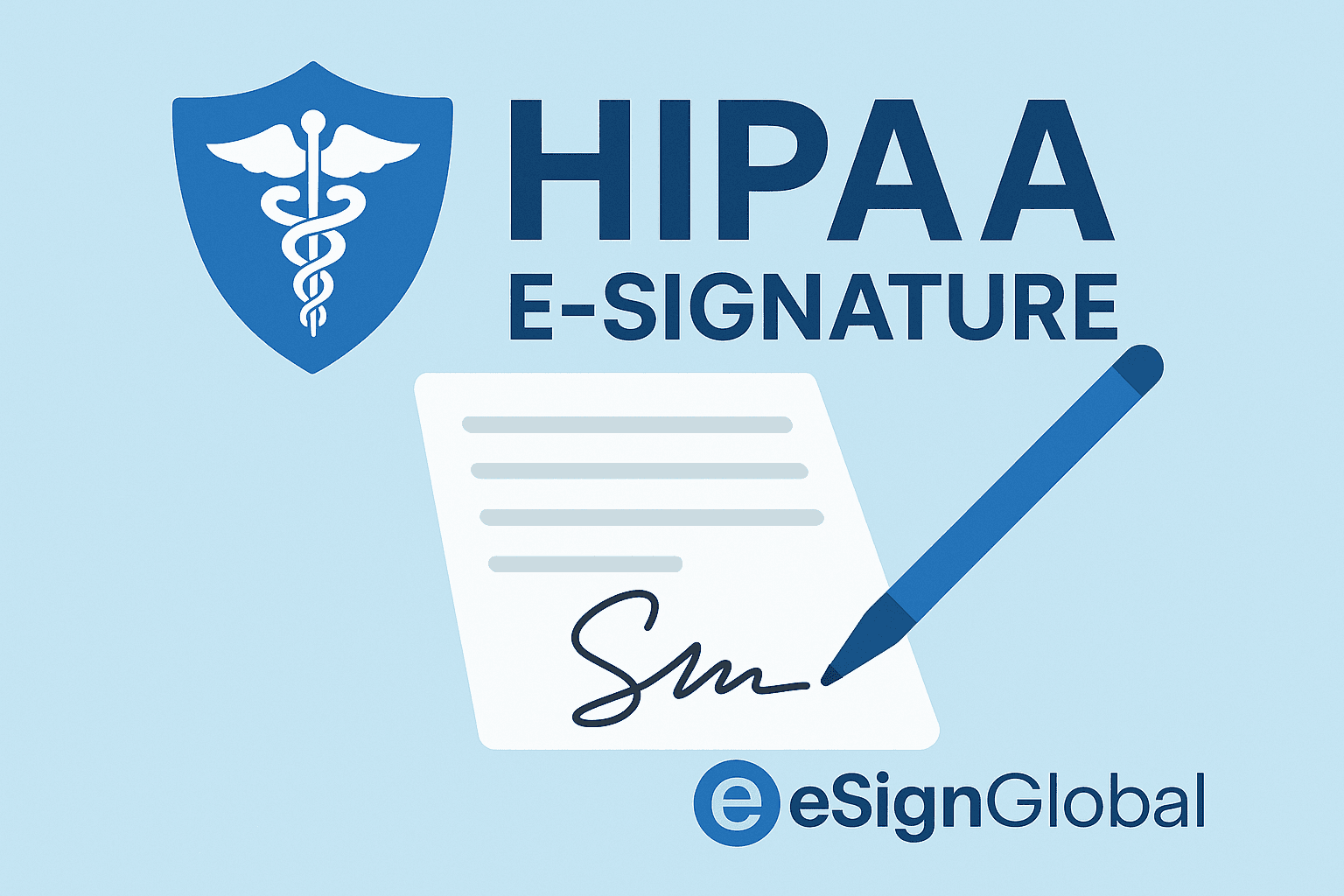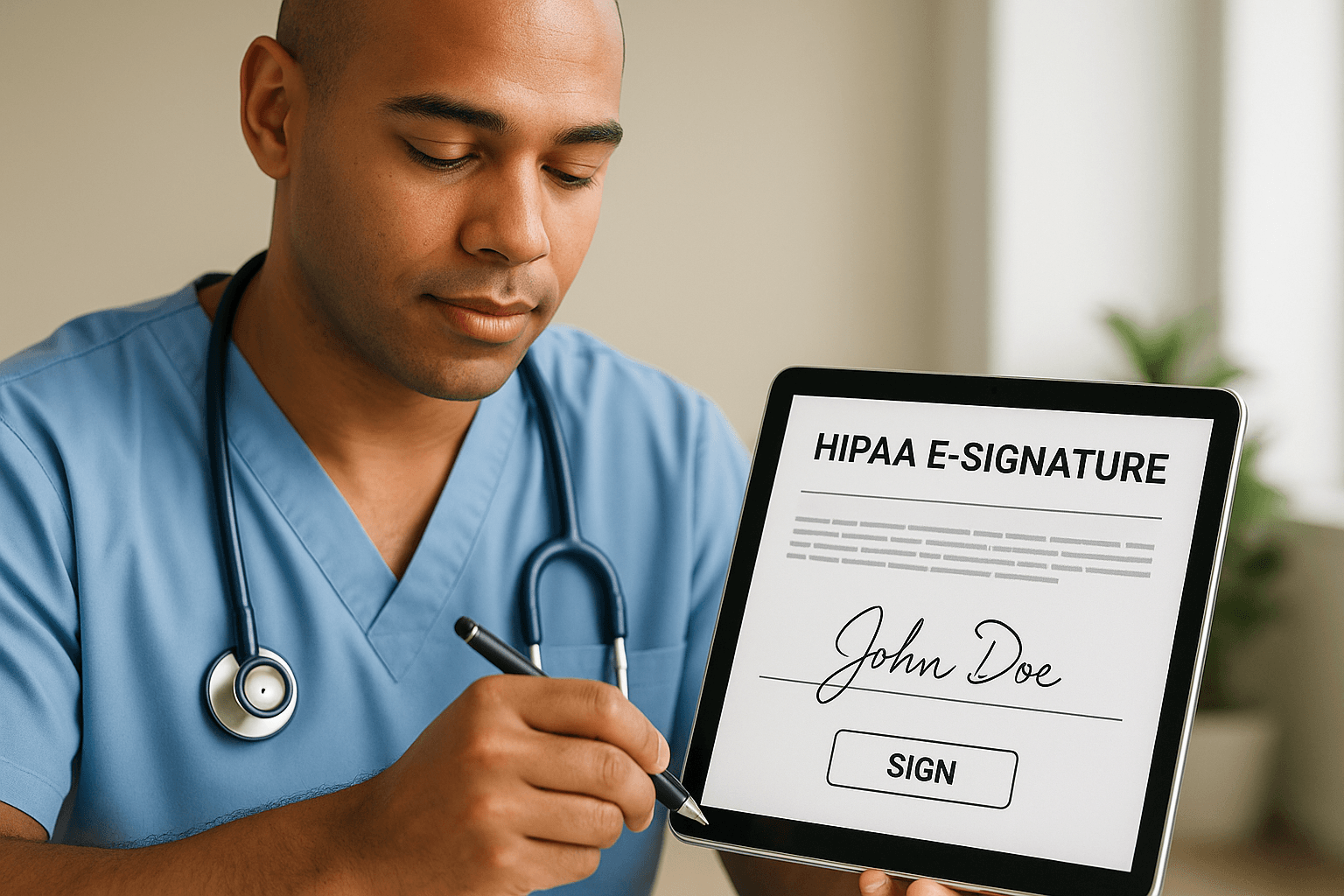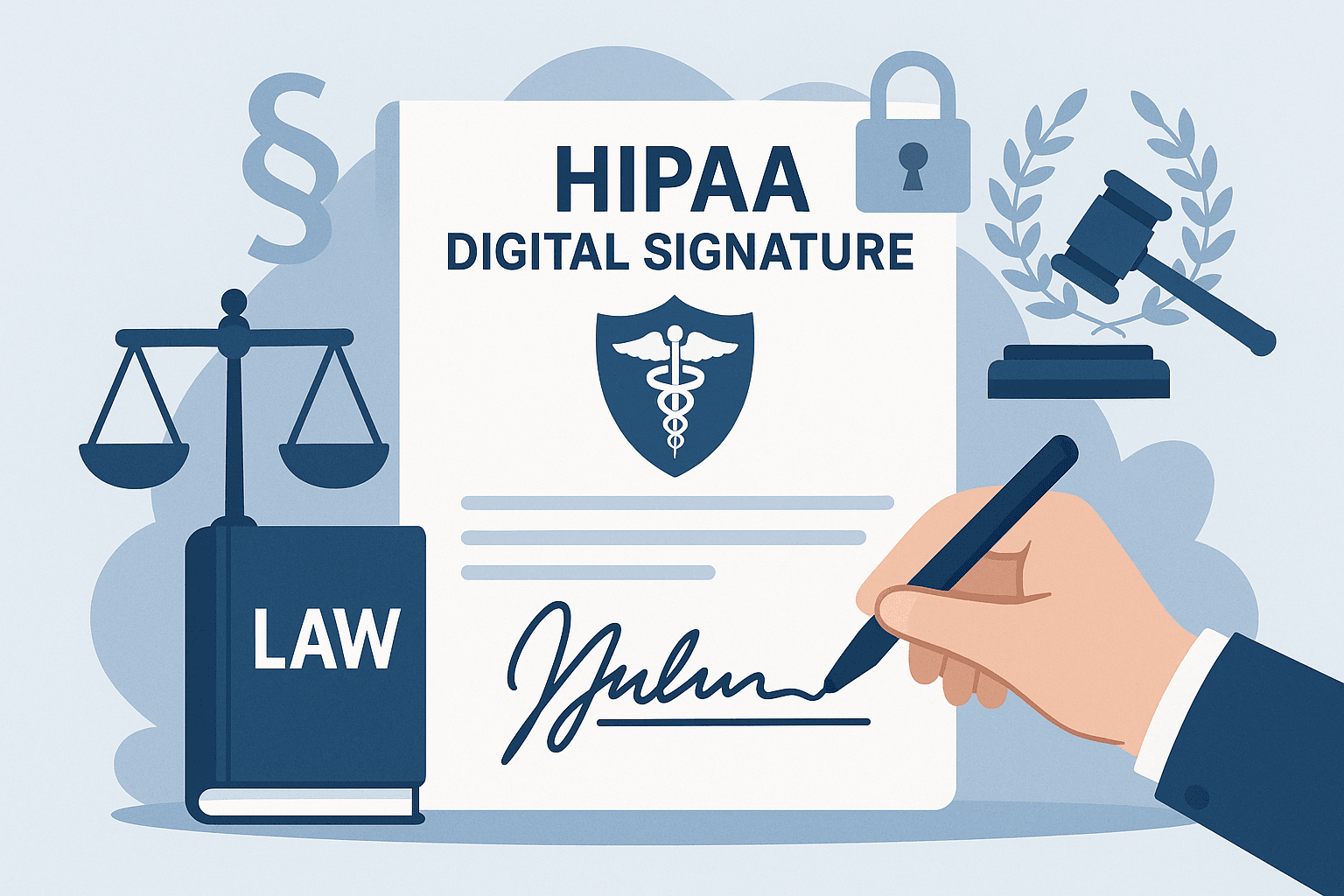WhatsApp or email with our sales team or get in touch with a business development professional in your region.
Best E Signature Software For Small Business - Compliance Standards





Navigating HIPAA Compliance in the E-Signature Era: A Deep Dive for Digital-First Businesses
In today’s digital-first world, healthcare providers and their partners face increasing pressure to modernize workflows while maintaining full compliance with ever-stricter local and international regulations. Nowhere is this more critical than in handling protected health information (PHI) under HIPAA — the Health Insurance Portability and Accountability Act of 1996. One area under intense scrutiny is electronic signatures. Providers are rapidly adopting digital tools for medical records, consent forms, and contracts, yet few fully understand what it means for an e-signature solution to be HIPAA-compliant. The wrong choice can expose an organization to data breaches, regulatory penalties, and reputational damage.

Clarifying Key Terms: Electronic vs. Digital Signature in a HIPAA Context
Before discussing compliance frameworks or comparing vendors, it’s important to distinguish between electronic signatures and digital signatures — a confusion that persists across industries.
An electronic signature (commonly referred to as e-signature) is any sound, symbol, or process attached to or logically associated with a document that is executed with the intent to sign. These are legally recognized under frameworks like the U.S. ESIGN Act and UETA — both of which apply in HIPAA-covered contexts.
A digital signature is a specific subset of electronic signature backed by cryptographic algorithms and public key infrastructure (PKI). The digital signature adds layers of authentication, integrity, and non-repudiation, making it more suitable for industries — like healthcare — where trust and data security are paramount.
For HIPAA compliance, the key is not choosing one over the other per se, but rather whether the implementation meets the safeguards outlined in the HIPAA Security Rule, particularly around access control, integrity, and audit trails.
Market Growth: E-Signature Expansion Driven by Healthcare and Legal Demands
According to Statista, the global electronic signature market is projected to surpass $35 billion by 2029, driven significantly by the healthcare, legal, and financial sectors. MarketsandMarkets further reports that in North America, healthcare represents one of the fastest-growing verticals for digital transaction management platforms.
Gartner has noted a growing shift in healthcare privacy operations toward fully digital document lifecycle platforms that combine e-signature, encryption, and compliance automation. This shift is not only about digital convenience but an essential step to prevent HIPAA violations — which can cost up to $1.5 million per year for willful neglect.
This momentum has created demand for platforms that do more than just offer a checkbox-style signature field. Stakeholders now demand granular audit trails, multi-factor authentication (MFA), secure cloud infrastructure, and customizable BAA (Business Associate Agreement) support — all within a HIPAA framework.

Technical Foundations: Encryption, PKI, and HIPAA-Grade Audit Trails
HIPAA’s Security Rule mandates administrative, physical, and technical safeguards that must be implemented to ensure PHI integrity and confidentiality. In the context of digital signatures, this means incorporating cache-proof digital certificates (via PKI), strong encryption (AES 256-bit or higher), and immutable audit logs.
Public key infrastructure (PKI), which underpins digital signatures, provides a high level of identity assurance. Each signatory is issued a unique private-public key pair, and the signature is mathematically bound to both the signer and the document. This ensures it cannot be tampered with after signing — a critical requirement for safeguarding PHI.
Moreover, solutions aiming for HIPAA alignment must feature role-based access controls, time-stamped audit trails, endpoint authentication, and at-rest and in-transit encryption protocols. Importantly, platforms must also be willing to sign a BAA, which solidifies their legal responsibility to secure healthcare-related data under HIPAA guidelines.
Leading Platforms: Comparing HIPAA-Ready E-Signature Solutions
Not all e-signature platforms are made equal in compliance and functionality. Below are seven major players, compared in context with HIPAA and enterprise-grade requirements:
1. eSignGlobal
Billed as “Asia’s tech innovator” and a standout alternative to DocuSign and Adobe Sign, eSignGlobal is optimized for HIPAA compliance with end-to-end encryption, customizable audit trails, and a built-in BAA module. Unlike many Western platforms, it offers regional data residency options, making it particularly appealing for Asia-Pacific healthcare providers navigating both HIPAA and local data protection regulations. In practice, a Singapore-based clinic reduced onboarding time by 30% while improving legal defensibility by switching to eSignGlobal.
2. DocuSign
DocuSign remains a top-tier provider and supports HIPAA compliance for Enterprise subscriptions, including BAA contracts and advanced security integrations. However, its complexity and cost may be prohibitive for smaller firms.
3. Adobe Sign
Part of the Adobe Document Cloud suite, Adobe Sign offers HIPAA compliance through its enterprise-level agreements. It integrates tightly with Microsoft 365 and Salesforce Health Cloud, making it a preferred option for hospital networks global in nature.
4. HelloSign (Dropbox Sign)
Backed by Dropbox, HelloSign offers a user-friendly interface and entry-level HIPAA-compliant features with BAA upon request. Limitations emerge when scaling across complex approval hierarchies or integrating with clinical ERP systems.
5. PandaDoc
While user-centric and effective for internal healthcare contracting, PandaDoc’s HIPAA compliance options are limited to Enterprise tiers. It’s better suited for back-office functions rather than handling sensitive patient consent forms.
6. SignNow
A budget-conscious solution that offers HIPAA compliance when paired with higher-tier subscriptions. SignNow integrates easily with cloud storage but may lack deeper workflow controls needed by large healthcare institutions.
7. Zoho Sign
Not yet HIPAA-compliant by default, Zoho Sign is more attractive for non-clinical operations or as part of broader Zoho ecosystem usage. Regulatory customization is still evolving compared to league leaders.

Tailored Implementation: Varying Demands Across Company Sizes
HIPAA compliance and e-signature adoption differ significantly across organizational scales.
For small clinics and private practices, priority lies in having a legally defensible, easy-to-deploy solution that doesn’t demand steep IT resources. Tools like eSignGlobal offer localized language support, rapid deployment, and pre-configured HIPAA workflows — making them optimal for lean teams.
Mid-sized healthcare organizations, often regional hospitals or insurance processors, require systems integration with EMRs, CRM tools, and more robust role-based access controls. A platform such as DocuSign or Adobe Sign may meet these needs, augmented by enterprise implementation services.
Multinational enterprises — particularly those managing records across borders — face a more complex regulatory overlay. They must observe both HIPAA and regional privacy acts like Singapore’s PDPA, Japan’s APPI, or the EU’s GDPR. Here, e-signature solutions must provide global BAA coverage, advanced consent capture, region-specific data centers, and support multi-jurisdictional compliance workflows, all of which extend far beyond mere technical integration.
The Path Forward: Security Inside Compliance, Not Beside It
HIPAA-compliant document management is not a checklist but an ongoing operational discipline. As more health-related organizations service patients remotely via telehealth and digital onboarding, their document handling systems must scale responsively without sacrificing any security fidelity.
Today’s e-signature tools must embed compliance into their core architecture — not treat it as an optional patch. Solutions like eSignGlobal distinguish themselves by combining cryptographic certainty, regulatory awareness, and user-centric design in a single vertical stack. This is as much a policy decision as it is a technology one.
Whether transitioning from paper to digital consents or scaling internationally with localized compliance needs, organizations must partner with platforms that understand regulatory intricacies and deliver adaptive, data-secure workflows. It’s about building a compliant-by-design infrastructure — not just ticking boxes after deployment.

Shunfang
Head of Product Management at eSignGlobal, a seasoned leader with extensive international experience in the e-signature industry.
Follow me on LinkedIn
Get legally-binding eSignatures now!
30 days free fully feature trial
Business Email
Get Started
 Only business email allowed
Only business email allowed
Latest Articles


